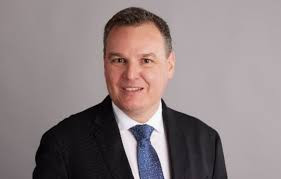
BY FIDELITY MHLANGA
ZIMBABWE’s fuel could have been much more expensive had it not been for the reintroduction of blending, Zimbabwe Energy Regulatory Authority (Zera) has said, notwithstanding that its price is now the highest in Africa.
Authorities last week hiked fuel prices to US$1,71 for diesel and US$1,63 for petrol with the increase prompted by the Russia-Ukraine conflict that has resulted in the disruption of global supplies, especially for oil and natural gas.
Before the hike, petrol and diesel were trading at US$1,57 and US$1,68, respectively.
The hike coincided with the reintroduction of ethanol blending which was suspended in January this year because of poor supplies.
Zera chief executive, Eddington Mazambani, said: “Actually blending reduced the level of fuel price increase. Without blending petrol would have been at $1,67. The effect of blending was to reduce it to $1,63.”
The move by government to scrap the Strategic Fuel Levy had also saved motorists from forking out more on diesel, he added.
“Government reduced the Strategic Fuel Levy from 12,7 US cents per litre to zero. Without that intervention the diesel price would have been $1,83. The Finance ministry is responsible for the duties and levies and it has been very supportive since October by reducing the levels of Strategic Fuel Levy,” he said.
- Chamisa under fire over US$120K donation
- Mavhunga puts DeMbare into Chibuku quarterfinals
- Pension funds bet on Cabora Bassa oilfields
- Councils defy govt fire tender directive
Keep Reading
Zimbabwe’s fuel consumption increased to almost 1,2 billion litres during the 11 months to November last year, compared to just over one billion litres in 2020, data from the energy regulator showed.
In its market update Zera said the country guzzled 1 152 198 301 litres during the period, 10% more than the 1 035 624 744 litres used during the same period in 2020.
Zimbabwe now has the highest fuel prices, not only in the Southern African Development Community (Sadc), but also on the African continent according to globalpetrolprices.com.
Zambia’s fuel costs US$1,57 per litre, Botswana US$1,19, Mozambique US$1,21, Namibia US$ 1,29, and South Africa US$1,43.
In Lesotho it costs US$1,41, Swaziland US$1,29, Rwanda US$1,33 and Kenya US$1,25, and Nigeria US$0,41.
Consumer Council of Zimbabwe (CCZ) spokesperson Chris Kamba expressed concern over the impact of the fuel hike on consumers.
“There is need to cushion consumers against incessant fuel price increases because it then impacts a wide range of products,” Kamba said.
Fuel costs have caused price hikes across all major products further eroding the disposable income of consumers.
Economist Prosper Chitambara said fuel hikes had compounded the woes of ordinary citizen who were already reeling under the effects of inflation which shot up to 96,4% in April from 72,7% in March.
“We have always had the highest fuel tariff in the Sadc region. I think currently we are now the highest on the African continent. I think it’s on account of the tariff on the fuel sector value chain that is imposing a significant burden. So as long as that tariff structure remains it means our fuel will always be the highest in the region and obviously that erodes competitiveness. It contributes to inflation, more so now because of the geopolitical developments and trends in Ukraine we have seen the price of fuel reaching a record high and Zimbabwe has not been spared,” Chitambara said.
“The inflationary trends erode salaries and incomes. So obviously the workers have had a brunt of high inflationary pressures. It’s difficult for the worker to keep up with the chronic high inflationary trends. When you look at the average minimum wages across the economy, they lag behind the poverty datum line as published by CCZ,” he added.
- Follow us on Twitter @NewsDayZimbabwe






